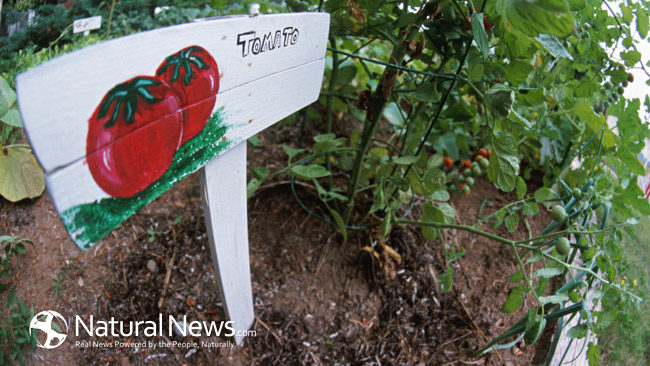Home gardeners find growing tomatoes more interesting than other vegetables. In fact, 93 percent of American gardeners grow tomatoes.
Some would argue that the homegrown tomato fruit is far better than the ones available in grocery stores.
Homegrown tomatoes
Americans eat between 22- 24 pounds of tomatoes per person, per year, according to the U.S. Department of Agriculture. The Agricultural Department claims there are close to 25,000 tomato varieties. Other sources suggest there are about 10,000 types of this edible fruit.
In any case, a homegrown tomato is the best! However, growing the best tomato is not as easy as one might think. For example, there are so many varieties of tomatoes to choose from. Moreover, every garden has its own environment.
Note that tomato plants tend to be more susceptible to disease. So, it’s a good idea to grow a range of tomato varieties — including one or two disease-resistant types.
Start your tomato plants out right. Try to find tomatoes that are best for your environment. Provide the proper care for your homegrown tomatoes with the following proven growing tips.
Growing tomato tips
- Don’t crowd your tomato plants — If you’re starting tomatoes from seeds, it’s important to be sure to give the seedlings ample room to branch out. Crowded growing surroundings hinder their growth. So, transplant them into their own individual 4 inch pot, soon after they get their first true leaves.
- Preheat the garden soil — Tomatoes thrive on heat. A few weeks before you intend to plant, cover the planting area with red or black plastic. The few extra degrees of soil warmth will render early tomatoes. Covering the soil with clear plastic also works well. The clear plastic lets the sun rays shine through and then traps heat energy into the ground. Additionally, it causes weed seeds to germinate and then burns them — making them incapable of sprouting again.
- Plant deep — Plant your tomato plants deep — up to the top of a few leaves. When you plant your tomatoes this way they can grow roots all along their stems. More roots will make your tomato plants stronger. Dig a deep hole, but be careful not to drive your cage or stake into the buried stem.
- Help your plant set fruit — There are two types of tomato plants. Determinate tomatoes reach a certain height and then set and ripen their fruit all at once. These types of tomatoes are inclined to start flowering early in the season. They normally set fruit without any problems — unless you experience unfavorable weather conditions. The big, juicy beefsteak tomatoes grow on indeterminate plants — they just keep growing. Indeterminate tomato plants are vines and they reach for the sun. They like to grow tall before they start setting fruits. Pinch off the tips of the main stems in early summer to encourage the plant to start flowering.
- Water regularly — Water the plants regularly and deeply while they are developing. Irregular watering may lead to the plant developing blossom end rot and cracking. Make sure your plants get at least 1 inch of water per week. However, during hot, dry spells they may need more water. During the day, if your plant starts to wilt, water it. After the tomato fruit begins to ripen, you can reduce watering. By lessening water, your plants will focus on concentrating its sugars for better flavor.
- Pinch and prune — Pinch and remove suckers that tend to develop in the crotch joint of two branches. They will not bear fruit and have a tendency to take away energy from the rest of the plant. But take it easy on pruning the rest of the plant. In order to allow the sun to reach the ripening fruit, thin out a few leaves, sparingly. Keep in mind — it’s the leaves that are photosynthesizing and creating the sugars that help in providing flavor to your juicy tomatoes.
- Remove the bottom leaves — As the tomato plants start filling out, the bottom leaves get the least air circulation and sun. Additionally, being close to the ground, soil borne pathogens can easily splash up onto them. These leaves are the oldest and usually are the first leaves to develop fungus problems. Remove the leaves from the bottom 1 foot of the stem once your tomato plants reach about three feet tall.
Harvesting and storing tomato plants
Tomatoes change their color as they ripen. From vibrant medium-green, to a lighter shade — with faint pink or yellow — these mature green tomatoes can be chopped into salsas, pickled, or pan-fried into a delicious appetizer.
Tomato flavors also change as the fruit ripens. The exact signs of ripeness tend to vary with each variety. For the most part, a perfectly ripe tomato shows a deep color and feels firm when it is gently squeezed.
Here are some tips on storing tomatoes:
- Store picked tomatoes at room temperature indoors — or outside, in a shady place.
- Never refrigerate tomatoes. Temperatures below 55 degrees Fahrenheit cause the flavor compounds to break down.
- Bumper crops can be canned, dried, or frozen for later use.
- Be aware! While tomatoes are perfectly safe and healthy to eat — their leaves are actually toxic.
The first ripe tomato of summer brings excitement and joy for many home gardeners — a trophy, to say the least. Getting your tomato plants off to a great start will reward you all season long.
It all starts with the right seed and a little tender-loving-care. Save the seeds from your best tomatoes and plant the seeds again next year.












